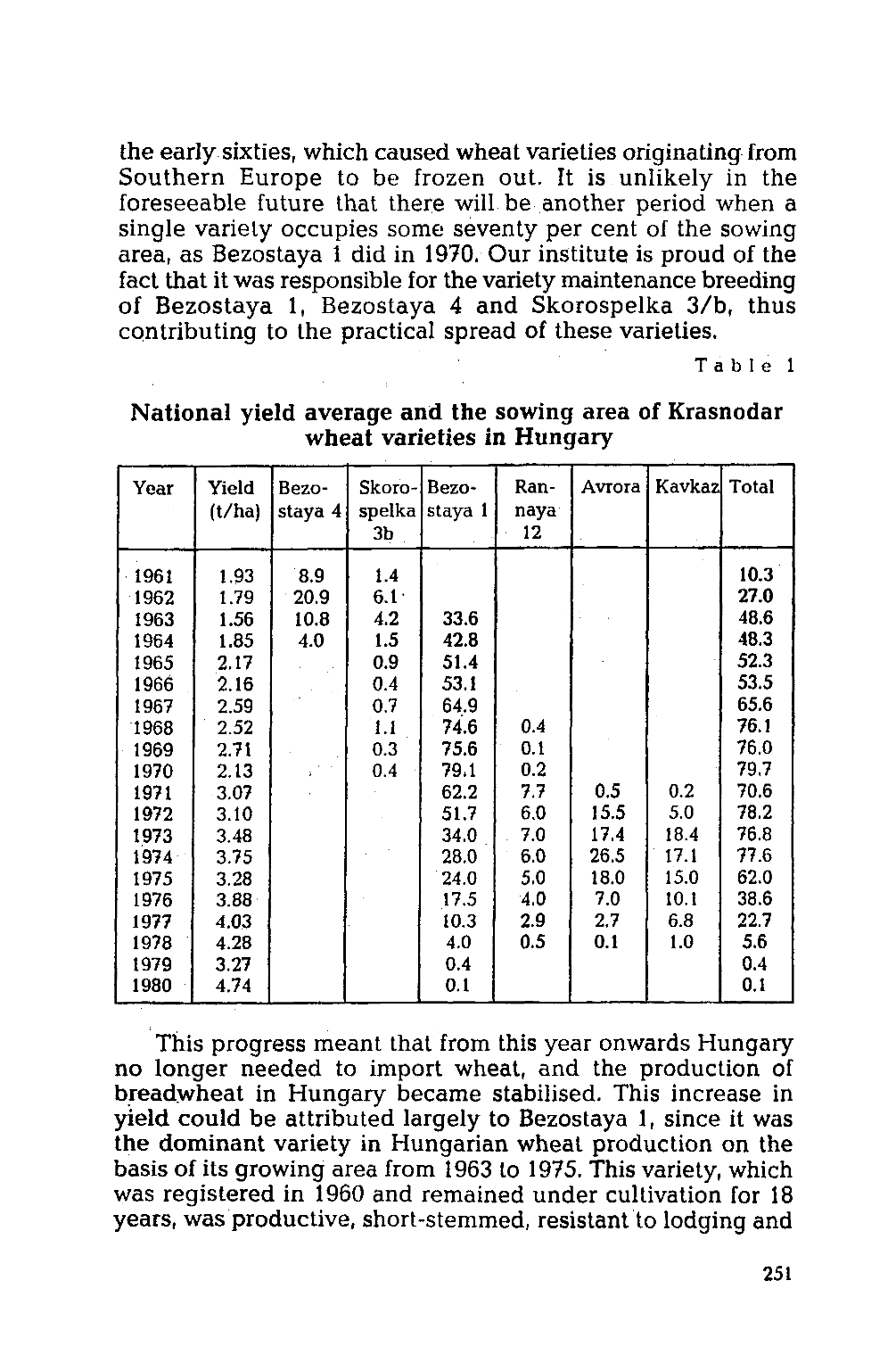

the early sixties, which caused wheat varieties originating from
Southern Europe to be frozen out. It is unlikely in the
foreseeable future that there will be another period when a
single variety occupies some seventy per cent of the sowing
area, as Bezostaya 1 did in 1970. Our institute is proud of the
fact that it was responsible for the variety maintenance breeding
of Bezostaya 1, Bezostaya 4 and Skorospelka 3/b, thus
contributing to the practical spread of these varieties.
T a b l e 1
N ational yield average and the sow ing area of Krasnodar
wheat varieties in Hungary
Year Yield
(t/ha)
Bezo
staya 4
Skoro
spelka
3b
Bezo
staya 1
Ran-
naya
12
Avrora Kavkaz Total
1961 1.93 8.9
1.4
10.3
1962 1.79 20.9 6.1
27.0
1963 1.56 10.8 4.2 33.6
48.6
1964 1.85 4.0
1.5 42.8
48.3
1965 2.17
0.9 51.4
52.3
1966 2.16
0.4 53.1
53.5
1967 2.59
0.7 64.9
65.6
1968 2.52
1.1 74.6 0.4
76.1
1969 2.71
0.3 75.6 0.1
76.0
1970 2.13
0.4 79Л 0.2
79.7
1971 3.07
62.2 7.7
0.5
0.2 70.6
1972 3.10
51.7 6.0 15.5 5.0 78.2
1973 3.48
34.0 7.0 17.4 18.4 76.8
1974 3.75
28.0 6.0 26.5 17.1 77.6
1975 3.28
24.0 5.0 18.0 15.0 62.0
1976 3.88
17.5 4.0
7.0 10.1 38.6
1977 4.03
10.3 2.9
2.7 6.8 22.7
1978 4.28
4.0
0.5
0.1
1.0 5.6
1979 3.27
0.4
0.4
1980 4.74
0.1
0.1
This progress meant that from this year onwards Hungary
no longer needed to import wheat, and the production of
breadwheat in Hungary became stabilised. This increase in
yield could be attributed largely to Bezostaya
1
, since it was
the dominant variety in Hungarian wheat production on the
basis of its growing area from 1963 to 1975. This variety, which
was registered in 1960 and remained under cultivation for 18
years, was productive, short-stemmed, resistant to lodging and
251
Научная электронная библиотека ЦНСХБ









